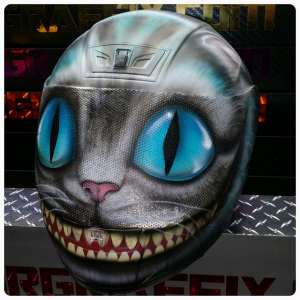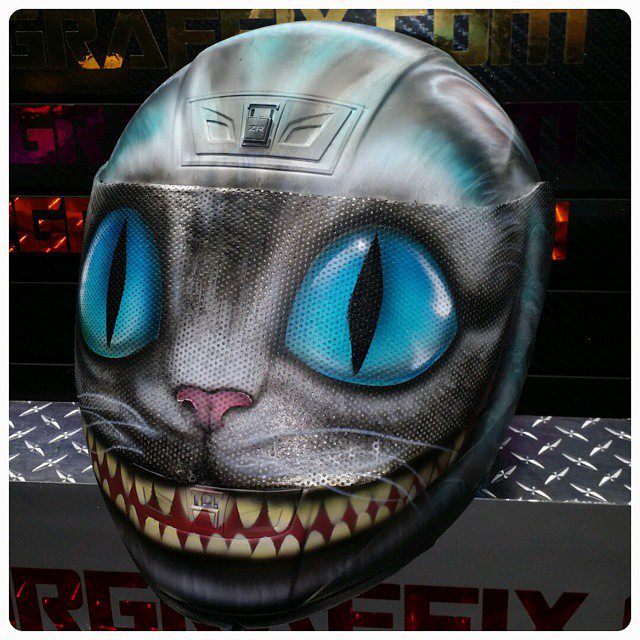
The character has surpassed the boundary of literature, becoming a part of popular culture and appearing in different forms of media including political cartoons to television in addition to cross-disciplinary studies ranging from commerce to science. One of the most distinguishing features of the Cheshire Cat along with its grin is its ability to disappear or vanish its body from time to time with its iconic grin being the last thing visible.
Character Biography
Origins
Numerous theories have been put forward describing the origin of the phrase related to the character’s or the real Cheshire cat’s grin in English history. Most prominent of them are given below.
- A possible origin of the phrase is one mostly preferred by the residents of Cheshire, an English county boasting of having numerous dairy farms. Hence, they believe the cat’s grin is due to the abundance of milk and cream in the region.
- Brewer’s Dictionary describes the origin of the phrase relating it to the town of Cheshire in England where cheeses were moulded in the shape of a cat or lion, giving them a grin on their face.
- Samuel Maunder explained in the year 1853 that the phrase originates due to the ill-fated attempts by a logo and crest painter of England to represent a rambling lion, crest of an influential family at that time. That logo was to be put on many of the inns owned by the family. But a close resemblance of the lions to cats triggered a reaction where it was often called instead by many humorous and despicable names.
- The Cheshire Cat made its first appearance in literature in the 18th century in A Classical Dictionary of the Vulgar Tongue compiled by Francis Grose in 1788. It contains a particular record where the phrase is attributed to, “someone who reveals his/her teeth and gums wide open while laughing.”
- The phrase makes its appearance again in print media in 1792 in John Wolcot’s sobriquet Peter Pindar’s Pair of Lyric Epistles.
- The phrase also makes an appearance in 1855, this time in William Thackeray’s The Newcomers, where a woman’s grin is compared to that of a Cheshire Cat.
The Character in Lewis Carroll’s Novel
The cat as an important character gained the widespread popularity it enjoys in the 1865 novel by Lewis Carroll. The novel was titled as Alice’s Adventure in Wonderland. The character of Alice comes across the Cat first at the Duchess’ house’s kitchen and later on a tree’s branches where the character shows its ability to appear and disappear at will. The Cheshire Cat continuously occupies Alice in many humorous but a bit perplexing conversations.
The character raises philosophical points, many times annoying or confusing Alice in the process. It also appears suddenly to cheer Alice when she is at the palace of the Queen. When the cat is sentenced to death by beheading, she puzzles everyone by making its head appear only, vanishing his body completely and inciting a debate among the executioner, the King, and the Queen about whether it is possible to behead an already disembodied head.
The Cheshire Cat disappears gradually until nothing but its grin is left at one point in the novel which induces Alice to remark that she has never witnessed a grin without the body of any cat, while having seen a cat without showing any grin.
Appearance in Films
Alice in Wonderland (Disney animated film of 1951)
In the Disney animated adaptation of the novel in 1951 named Alice in Wonderland, the character of the cat is shown as a mischievous but intelligent character which helps Alice and sometimes gets her in trouble. The cat often sings the first stanza of the Hatter’s poem titled as Jabberwocky.
The voice of the animated Cheshire Cat was provided by Sterling Holloway in the film (Alice in Wonderland) with Jim Cummings taking over the task from 2004 and continuing it till present.
Alice in Wonderland (1999 Disney TV film)
In this TV adaptation of Carroll’s novel by Disney, comedian Whoopi Goldberg portrayed the character of the cat. In this adaptation of the character, it acts completely as an ally and companion to the protagonist Alice.
Tim Burton 2010 live-action film adaptation of the novel (Alice in Wonderland)
The character made its next and latest appearance in the Walt Disney’s 2010 movie, Alice in Wonderland, which was directed by the director of Batman movies, Tim Burton. The character was voiced by British actor Stephen Fry.
In this movie, Cheshire or ‘Chess’ fixes Alice’s wound suffered by her earlier due to the Bandersnatch. The Cheshire Cat also guides Alice to Hightopp, the Mad Hatter and the March hare.
Although the Hatter blames the cat for abandonment when the Red Queen disposed the White Queen, the cat later helps the Hatter by impersonating him when the Hatter was sentenced to decapitation. ‘Chess’ is able to make itself intangible or weightless throughout his appearance. It can also become invisible (which it uses to survive decapitation) and is mostly shown to be gliding.
The above helmet was painted by Airgraffix.


